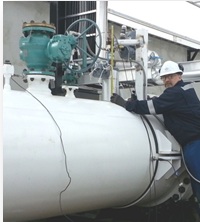Knowledge Center
- Downloads
- Technical Newsletter
- Recommended Guidelines and References
- Specifications
- Technical Papers
- Tools and Calculators
- Training
- Articles, Tips and Requirements
- An Integrated Approach to Manage Vibration Risks
- Design Requirements for Reciprocating Compressors
- Evaluating Compressor Operating Risks
- Five simple methods to check reciprocating compressor performance
- Important Differences in Pulsation Software
- Liquid Pumping Systems (Including Liquid Pipelines)
- Noise Regulations Around the World
- Noise Risks in the Gas Industry
- Performance Monitoring Examples
- Pipe Support Stiffness, GMRC Project
- Piping Vibration Design Considerations
- Piping Vibration Examples
- Structural Vibration and Ways to Avoid It
- Tips for a Successful Project (Vibration Control)
- Transient Conditions on Small-Bore Piping
- Vendor Requirements for Piping Vibration & Integrity Assessment
- Vibration-induced fatigue (whitepaper)
- Vibration Issues Affecting Gas Compressor Facilities
- Ask the expert
Vendor Requirements for Piping Vibration and Integrity Assessment
(Per Energy Institute Guideline)
Appropriate tools and expertise in the following areas are necessary to properly perform a Piping Vibration and Integrity Assessment (per Energy Institute Guideline):
- Specialized field measurement instrumentation to properly capture transient vibration across many channels and operating conditions. Single channel vibration equipment is not sufficient to capture vibrations during changes in operating conditions.
For many facilities, a multichannel data acquisition system is required. - Piping Vibration Assessment (including small-bore piping during normal and transient operations)
 |
| Piping Vibration Assessment (including small-bore piping during normal and transient operations) |
- Advanced data processing techniques and software tools to analyze the data library, including time waveform and frequency based results. The post processing will determine locations of excess vibration, stress, and the impact on integrity.
- Experience in troubleshooting. The vibration/dynamic engineering company should have 20+ years’ experience in piping and machinery troubleshooting to assist in root cause analysis. Detailed experience in identifying and resolving FIE/FIV, AIE/AIV, surge, resonance, shell mode, and pulsation problems in the field and during the design stage.
- Engineering experience with designing effective vibration solutions for compressors and pump systems. This includes detailed design and field experience with pulsation analysis, mechanical forced response, dynamic pressure drop, blowdown studies, and other related work.
- Experience in dynamic analysis. When high risk areas (high LOF) are identified, the project team will need to investigate the problem in more detail using advanced modeling simulations such as pulsation analysis (or acoustic analysis), modal analysis, FEA, transient analysis, surge control simulation, or other studies.
- Ability to interpret and apply vibration and stress guidelines. This is a confusing area due to many different test methodologies, guidelines, and international standards that may apply.
- Proper documentation and effective project management. The integrity assessment must include the work processes, as well as related information databases to document all test locations, measurements, problem areas, approved modifications, issue status, and compliance.
Given the above requirements, facility owners and operators typically employ a specialized vibration and dynamic engineering company, such as Wood, to assist in the piping review, assessment, and field surveys.
Related Service
Free webinar
Learn how to select and design vibration control solutions that work – using real-world data and case studies. Register now



